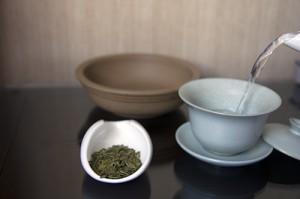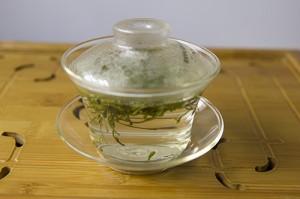Unless your family is in the trade for generations, there is a learning curve for tea, at least for loose leaf tea. Everyone starts somewhere- from tea bags to tea balls or simplistic tools. Along the way, there might be one or more events that sparked a quantum leap in our understanding of tea.
For me, there are several moments but one that stood out is the discovery of the gaiwan and gongfu brewing which probably more than any other single event was THE game changer.
Well, technically it is 2 events but the discovery works in tandem.
It seems odd that this would have such an impact but there are actually 5 effects of using a gaiwan in gongfu brewing.
Extracts the True Nature of Tea

What you see is what you get. Figuratively speaking.
Gaiwan provide enough space for the leaves to unfurl in all its glory as well as providing sufficient heat (provided the gaiwan is well made and the lid closes tightly) to aid that.
A Gaiwan leads you to Better Tea
A direct consequence of the point above is that a gaiwan will more often than not lead you to better tea. While you can hide the flaws using a big pot or mug, using a gaiwan- coupled with the higher leaf to water ratio- brings out the flaws of the tea.
Over time, more often than not this leads one to better tea. For example, a poorly made green style Tieguanyin can be concealed with western brewing methods but once you use a gaiwan and higher leaf to water ratios to bring out that stomach churning “raw greenness”, you can’t bring yourself to drink it again.
Forces you to Focus
Unlike making tea in a big pot or mug, you have to focus when you are making tea with a gaiwan simply because you will scald your fingers if you don’t.
The attention and initial difficulty though helps you concentrate on the process and on the tea. No more “what movie do you like to pair with this tea” type of discussion.
Do nothing other than make tea or you get burnt, literally. And that is good for studying tea, both in terms of brewing- never just a means to an end- as well as tasting.
Multiple Infusions
The charm of tea is never more evident than in multiple infusions, particularly for oolong and dark teas.
Observing the subtle changes of tea over the different infusions is part of the fun.
For example, if you are brewing a Wuyi Yancha, the first brew might be a bit lighter while the second and third has a nice combination of bittersweet stickiness. By the fifth brew onwards, the bitterness is gone but the sweetness remains, albeit with a thinner feel.
Inexpensive and versatile
A good well-made gaiwan- if you just get a plain one rather than an exquisite hand-painted one- can be had for about $20-$30 tops, while a middling one costs $10 or so.

Green tea. Check.
White and yellow teas. Check.
Oolong teas. Definitely.
Black teas- of course, despite what the almighty Wikipedia tells you.
Dark teas. Yes.
So on top of being inexpensive, only need one.
Well, technically but since it is very likely that you would break the lid- I have broken 2, this year alone- it’s good to have a spare.
This preserves your money for teas or books.
That is not to say that you don’t need to spend on tea wares any further but that is something you will automatically do so on your own.
